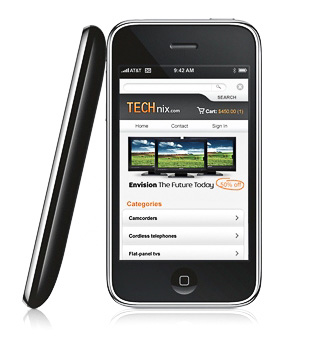Like the TV before it and the computer after that, at one point it may have been hard to imagine much less believe that mobile devices would be a regular part of daily life for the majority of the population. On a planet with approximately 7 billion people, 2011 saw an astonishing 5.3 billion mobile subscriptions. That’s just about 77% of the total population.
It’s no wonder that mobile ad spending worldwide is predicted to top out at $3.3 billion by the end of 2011 and jump to $20.6 billion by 2015. Much of the advertising will be driven by search ads and local ads.
Given those statistics one can’t ignore the opportunity to tap that ‘connected’ community through mobile marketing. I’ve put together some of the trends we have seen and might seen in the coming year when it comes to this channel of opportunity.
Trend 1: Ad spending to reach the mobile segments will continue to rise. Google will likely continue to be the leader in ad revenue but look for other opportunities to present themselves with time. Bing could take a bigger share of the advertising pie as well with more and more search apps that use Bing being installed on phones and devices.
Trend 2: For the time being, M-Commerce (or mobile ecommerce) has been primarily an extension of a brands current online store. Look for this trend to shift a bit as it becomes even easier to make purchases through even more mobile friendly site versions (and possibly the use of ‘mobile only offers’.)
We are already starting to see bar code scanner apps evolve to not only provide additional ‘shopping related’ information (such as price, distance to store etc…) about those items scanned, but now beginning to include “buy it now” or “add to cart” functionality on the spot (this has just happend with a recent app Amazon has launched.)
Scan it, compare it, buy it at the best price, and pick it up at the store.
Trend 3: Look for those bar scanner type apps to evolve even further in the coming year. This could result in some very healthy competition among retailers not to mention the possible greater risk for losing a customer to a competitor that physically walked into your store first.
Imagine this. You walk into a local store, find the item you wanted, scan it with your smart phone bar code reader, find the same product less than a mile away at another store … and for a better price. You buy it by clicking a button on your mobile phone and entering your payment information. The store puts the item on hold for you to pickup. What happens next? You leave the store you originally walked into only to end up at their competitor down the road with the item in hand.
How’s that for ‘shopping cart abandonment’?
Expect to see this trend offset with more and more ‘price match guarantees’. Find it somewhere else and we’ll match or beat the price on the spot.
Trend 4: Location based mobile marketing gains steam. Imagine being able to automatically market to a potential consumer that is in the area (but not directly inside) of your brick and mortar store. It’s not only a reality to some degree, but is a primary driver of what occurs with apps such as Foursquare, and Facebook Places. Take it a step further and consider this. A potential customer performs a search from their mobile device for a product that you offer.
In return they get a listing of stores directly near them who have that very product in stock. The advertising is based on GPS position of the potential customer in relation to the location of your store at a specific in time (much like ‘checking in at a specific location’ using some of the social apps that have grown in popularity.)
Like the above trend, this type of search ability should grow and if you don’t take advantage of mobile marketing based on location, you’ll be left out only to see your competitors (who take advantage of it) see the rewards.
Trend 5: Consumers expect accessibility on all levels. We now live in a world where consumers no longer rely on a desktop computer (or even a laptop) to access the internet. It is becoming second nature (although still in its infancy) to browse the internet using mobile devices-and in the near future, it is said that accessing the internet via mobile devices will surpass accessing it using any other method.
Determining which way to go-a mobile app or simply a website that is ‘mobile friendly’-will be the real issue. But you must make your business accessible on all levels if you are going to compete in this day and age.
Trend 6: Smart phone users are on the rise and were projected to reach 73.3 million by the end of 2011. At that rate, the smart phone owners will account for approximately 23% of the mobile user population. It is estimated that by 2015 they could very well represent 43% or more. As a comparison, in 2010 smart phones accounted for 21.8 of all handsets shipped worldwide.
Look for potential customers to become more engaged in 2012 as the smart phone segment continues to grow. They are going to expect better, more intuitive mobile versions of websites that allow them to easily shop and find the items they seek.
Trend 7: Social networking continues its dominance among mobile users. More and more users are frequenting social networking apps such as Facebook, Twitter, and Foursquare.
In fact, a 2010 Keynote / Adobe survey of mobile users asked them what their favorite mobile activity was and approximately 76% of respondents listed Social Networking (second only to maps and directions.)
Nielsen listed mobile social networking is the fastest-growing consumer mobile app category in 2010 and that trend continues in 2011. Many of these social networking sites are becoming portals for users accessing the internet (much like search engines were when they arrived on the scene with the advent of the internet.) Mass amounts of messaging and e-mail traffic, videos, photos, games and commerce are exchanged with each minute using these tools.
If not already doing so, marketers need to begin to think about reaching out to this channel, increasing their exposure time at every possible opportunity.
Trend 8: Optimizing websites for mobile platforms is a reality. No longer is it good enough to consider a ‘well optimized’ (non-mobile site version) the end all, be all. With the demands mobile is presenting to everyone, consideration needs to be given to continual optimization of a mobile site that aims for increases to speed, image rendering and again, accessibility. As was with the ‘desktop only’ site versions of what seems now long ago, on site usability and traditional search engine optimization rules should apply.
What mobile has in store for us in the coming year is anyone’s guess. It is clear however that it’s shaping up for staggering-possible record breaking-growth once again that simply can’t be ignored if you are to stay competitive.
 Keeping with the theme of my previous article on Mobile Commerce, I recently read a number of news items that bring to light even more, the big opportunity there is in moving toward a mobile marketplace. I wanted to summarize the findings for you below.
Keeping with the theme of my previous article on Mobile Commerce, I recently read a number of news items that bring to light even more, the big opportunity there is in moving toward a mobile marketplace. I wanted to summarize the findings for you below. With all the talk of iPhones, apps, Blackberry’s and like minded ‘smart devices’, at some point (if you haven’t already) you need to consider when it is right to make the jump to mobile commerce. These technologies are more prevalent than ever before, and the rate of use is growing with what seems like every passing hour. Add to that the fact that mobile shopping is expected to approach $2 billion in 2010 — and top $119 billion by 2015 — and you have the makings of something that can add substantial revenue to your bottom line in the near future.
With all the talk of iPhones, apps, Blackberry’s and like minded ‘smart devices’, at some point (if you haven’t already) you need to consider when it is right to make the jump to mobile commerce. These technologies are more prevalent than ever before, and the rate of use is growing with what seems like every passing hour. Add to that the fact that mobile shopping is expected to approach $2 billion in 2010 — and top $119 billion by 2015 — and you have the makings of something that can add substantial revenue to your bottom line in the near future.